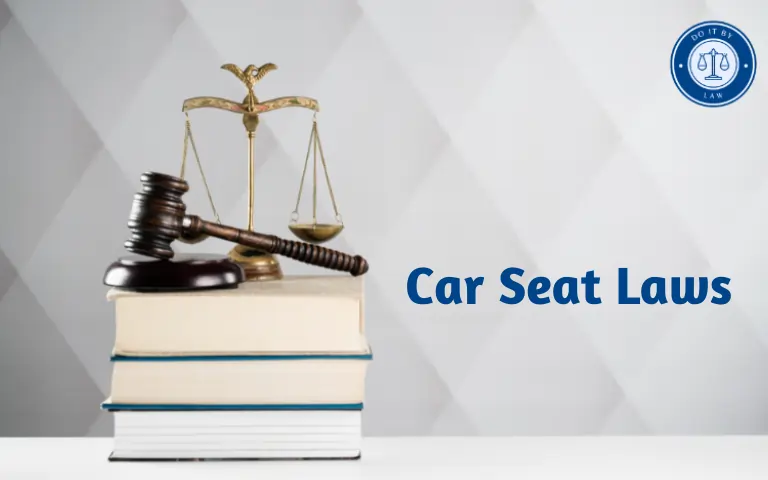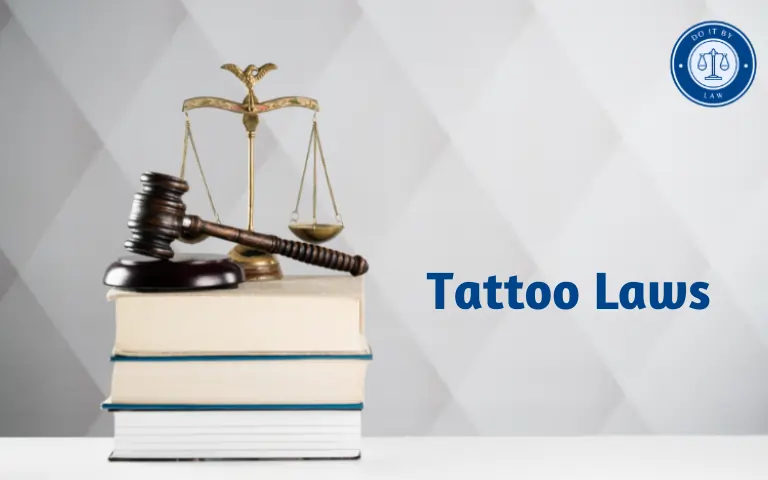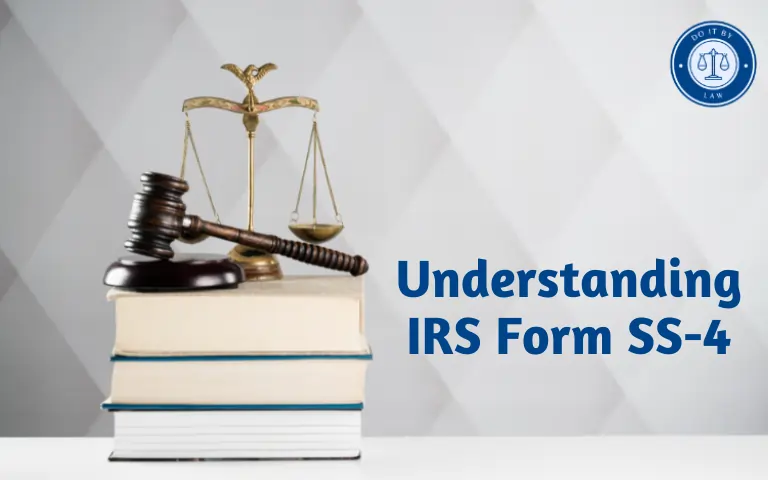Understanding Car Seat Laws: State-by-State Guide
Navigating the myriad of car seat laws across the United States can be a daunting task for any parent or guardian. Each state has its own set of regulations that dictate the age, weight, and height requirements for child car seats, making it essential for caregivers to stay informed.
This blog aims to demystify the legal landscape surrounding car seat usage, providing a clear guide to the different stages of car seats, state-specific laws, and the penalties for non-compliance. By understanding and adhering to these laws, we can ensure the safety of our youngest passengers on every journey.
Why car seat laws?
Car seat laws in the United States are in place to protect children from injuries and fatalities in car accidents. These regulations are crucial because car accidents can be fatal, especially for young children who are not properly restrained. Here’s why these laws exist:

- Safety First: Car seat laws prioritize the safety of children during travel. They ensure that infants, toddlers, and young children are securely restrained while riding in vehicles.
- Reducing Risks: Properly installed car seats significantly reduce the risk of injury or death in the event of a collision. By adhering to these laws, parents and caregivers can safeguard their little ones.
- Federal Standards: All car seats sold in the U.S. must meet federal safety standards. These standards dictate how critical safety information is conveyed to buyers through labels and instruction manuals. Additionally, crash tests assess how each seat performs during accidents.
- Age- and Size-Appropriate Restraints: Child passenger restraint laws require children to travel in age- and size-appropriate child restraints, such as car seats or booster seats, until adult seat belts fit them properly. Using the right car seats, boosters, and seat belts reduces the risk of death and serious injury in a crash.
- State-Specific Variations: Car seat laws vary from state to state. Each state has its own regulations, making it essential for parents and caregivers to stay informed. Families traveling across different states or relocating need to understand the specific rules and requirements for child restraints.
Understanding Car Seat Stages
Let’s delve into the different car seat stages and the related laws in the United States. Ensuring proper car seat usage is crucial for your child’s safety during car rides. Here’s a comprehensive overview:
| Stage | Description |
|---|---|
| Rear-Facing | – For children aged 4-7 years. – Use forward-facing car seats with harnesses. – Transition when outgrowing the rear-facing seat. Follow weight and height guidelines. |
| Forward-Facing | – For children aged 8-12 years or until 4’9″ tall. – Elevates child to proper height for adult seat belts. – Ensures seat belts fit correctly. – Types: – High-Back Boosters: Provide head and neck support. – Backless Boosters: Elevate the child for seat belt use. |
| Booster Seat | – For children aged 8-12 years or until 4’9″ tall. – Elevates child to proper height for adult seat belts. – Ensures seat belts fit correctly. – Types: – High-Back Boosters: Provide head and neck support. – Backless Boosters: Elevate child for seat belt use. |
Stage 1: Rear-facing Infant Car Seats:
- Age and Weight Guidelines:
- Rear-facing infant car seats are designed for newborns and babies, typically up to 12-24 months or 22-40 pounds (depending on the specific car seat model).
- The American Academy of Pediatrics (AAP) recommends keeping your child rear-facing for as long as possible, at least until they reach the height or weight limit of their car seat.
- Types of Rear-facing Infant Car Seats:
- There are two primary types:
- Infant-only seats: Designed specifically for newborns and small babies, these can only be used rear-facing.
- Convertible car seats: Can be used both rear-facing for infants and forward-facing for older children.
- There are two primary types:
- Installation and Positioning:
- Proper installation is crucial for car seat safety.
- Follow the manufacturer’s instructions and ensure a tight fit.
- The car seat should be installed at the correct angle (usually between 30 and 45 degrees) to support your baby’s head and keep their airway clear.
- When to Move to the Next Stage:
- Transition your child to the next car seat stage when they reach the height or weight limit of their rear-facing seat or when their head is within one inch of the top of the car seat shell.
Stage 2: Convertible Car Seats:
- Age and Weight Guidelines:
- Convertible car seats are designed for children who have outgrown their rear-facing infant seat but are not yet ready for a forward-facing seat with a harness.
- Typically suitable for children between 12 months and 4 years old or up to 65 pounds, depending on the specific car seat model.
- Transitioning to the Next Stage:
- Move to the next stage when your child outgrows the convertible car seat or meets the height and weight requirements for the next type of seat.
Stage 3: Booster Seats:
- Age and Weight Guidelines:
- Booster seats are for older children who have outgrown convertible seats but are not yet tall enough for adult seat belts.
- Suitable for children around 4 to 8 years old or when they reach the height and weight limits of their forward-facing seat.
- Types of Booster Seats:
- High-back boosters: Provide head and neck support.
- Backless boosters: Elevate the child to the right height for seat belts.
- When to Transition to Seat Belts:
- Transition to using adult seat belts when your child is tall enough (usually around 4’9″) and the seat belt fits them properly.
- Ensure the lap belt lies low across their hips and the shoulder belt crosses their chest and shoulder.
Remember, following these car seat stages and adhering to state-specific laws ensures your child’s safety during every journey.
Federal Regulations and Compliance
Certainly! Let’s delve into the federal regulations and compliance related to car seats in the United States. These guidelines are essential for ensuring the safety of our little passengers:
| Aspect | Description |
|---|---|
| Federal Motor Vehicle Safety Standards (FMVSS) | U.S. federal regulations specifying design, construction, performance, and durability requirements for motor vehicles and regulated automobile safety-related components, systems, and design features. |
| Compliance Labels | Car seats come with compliance labels containing essential information: |
| – Weight & Height Restrictions: Specific weight and height limits for the seat. | |
| – Manufacture & Expiration Date: Manufacturer details, including the expiration date (AKA ‘Do Not Use After’). | |
| – Installation Instructions: Baseline information on correct installation. | |
| – Level Indicator: Ensures proper seat level and recline. | |
| – Safety Standards & Registration: Indicates compliance with federal safety standards and provides registration information. | |
| Crash Testing | Car seats undergo rigorous crash tests to evaluate safety performance. These tests simulate real-world collisions and assess how well the seat protects the child. Manufacturers must comply with NHTSA’s crash test requirements. |
| Recalls & Defects | Car seats can be recalled due to defects or safety risks. Regularly check for recalls and address any issues promptly. |
Federal Motor Vehicle Safety Standards (FMVSS):
- The National Highway Traffic Safety Administration (NHTSA) establishes and enforces FMVSS to enhance vehicle safety.
- FMVSS 213 specifically addresses child restraint systems (car seats).
- Car seats sold in the U.S. must meet these rigorous standards to ensure proper protection for children during car travel.
Compliance Labels:
- All car seats come with compliance labels that provide critical information:
- Manufacturer’s Name: Identifies the maker of the car seat.
- Model Number: Helps parents choose the correct replacement parts.
- Date of Manufacture: Important for recalls and expiration dates.
- Weight and Height Limits: Specifies the range for safe use.
- Installation Instructions: Guidance on proper installation.
- Warnings and Expiration Date: Alerts parents to potential risks and the seat’s useful life.
Crash Testing:
- Car seats undergo rigorous crash tests to evaluate their safety performance.
- These tests simulate real-world collisions and assess how well the seat protects the child.
- Manufacturers must comply with NHTSA’s crash test requirements.
Recalls and Defects:
- The NHTSA monitors car seat safety and issues recalls if defects are identified.
- Parents should register their car seats to receive recall notifications.
- Regularly check for recalls and address any issues promptly.
Child Passenger Safety Technicians (CPSTs):
- These experts are trained to educate parents on proper car seat installation and usage.
- CPSTs conduct car seat checks to ensure correct installation.
- Locate a CPST in your area for personalized guidance.
Remember, adhering to federal regulations and using compliant car seats is crucial for keeping our little ones safe on the road!
State-Specific Car Seat Laws
In the United States, car seat laws vary from state to state. Some states require children to be in a rear-facing car seat until a certain age or weight, while others have no specific rear-facing requirements.

| State | Rear-Facing Car Seat Requirement | Forward-Facing Car Seat Requirement | Booster Seat Requirement |
|---|---|---|---|
| Alabama | Until 1 year or 20 lbs. | 1-4 years or 20-40 lbs. | 5-7 years or 57 inches |
| Alaska | Until 1 year or 20 lbs. | 1-3 years and more than 20 lbs. | 4-15 years who are either shorter than 57 inches or weigh more than 20 but less than 65 pounds |
| Arizona | N/A | N/A | N/A |
| Arkansas | 5 years old or younger and less than 60 pounds | 6 and up or those heavier than 60 pounds | N/A |
| California | Until 2 years or 40 lbs. or 40 in. | N/A | N/A |
| Colorado | Until 1 year or 20 lbs. | N/A | N/A |
| Connecticut | Until 2 years or 30 lbs. | N/A | N/A |
| District of Columbia | Until 2 years or 40 lbs. or 40 in. | N/A | N/A |
| Florida | N/A | N/A | N/A |
| Georgia | N/A | N/A | N/A |
| Hawaii | N/A | N/A | N/A |
| Illinois | Until 2 years or 40 lbs. or 40 in. | N/A | N/A |
| Iowa | Until 1 year or 20 lbs. | N/A | N/A |
| Kansas | Until 3 years | N/A | N/A |
| Kentucky | N/A | N/A | N/A |
| Louisiana | Until 2 years | N/A | N/A |
| Maine | N/A | N/A | N/A |
| Maryland | N/A | N/A | N/A |
| Massachusetts | N/A | N/A | N/A |
| Michigan | N/A | N/A | N/A |
| Minnesota | N/A | N/A | N/A |
| Mississippi | N/A | N/A | N/A |
| Missouri | N/A | N/A | N/A |
| Montana | N/A | N/A | N/A |
| Nebraska | Until 2 years and outgrown the car seat’s height and weight limits | N/A | N/A |
| Nevada | N/A | N/A | N/A |
| New Hampshire | N/A | N/A | N/A |
| New Jersey | Until 2 years and 30 lbs. | N/A | N/A |
| New Mexico | Until 2 years and outgrown the car seat’s height and weight limits | N/A | N/A |
| New York | Until 2 years and outgrown the car seat’s height and weight limits | N/A | N/A |
| North Carolina | N/A | N/A | N/A |
| North Dakota | N/A | N/A | N/A |
| Ohio | Until 2 years and outgrown the car seat’s height and weight limits | N/A | N/A |
| Oklahoma | Until 2 years and outgrown the car seat’s height and weight limits | N/A | N/A |
| Oregon | Until 2 years | N/A | N/A |
| Pennsylvania | Until 2 years and outgrown the car seat’s height and weight limits | N/A | N/A |
| Puerto Rico | Until 2 years or 30 lbs. | N/A | N/A |
| Rhode Island | Until 2 years or 30 lbs. | N/A | N/A |
| South Carolina | Until 2 years or 30 lbs. | N/A | N/A |
| South Dakota | Until 2 years and outgrown the car seat’s height and weight limits | N/A | N/A |
| Tennessee | Until 1 year or 20 lbs. | N/A | N/A |
| Texas | N/A | N/A | N/A |
| Utah | N/A | N/A | N/A |
| Vermont | Until 1 year or 20 lbs. | N/A | N/A |
| Virginia | Until 2 years and outgrown the car seat’s height and weight limits | N/A | N/A |
| Washington | Until 2 years and outgrown car seat’s height and weight limits | N/A | N/A |
| West Virginia | N/A | N/A | N/A |
| Wisconsin | Until 1 year or 20 lbs. | N/A | N/A |
| Wyoming | N/A | N/A | N/A |
Note: The table is not exhaustive and may not include all state-specific car seat laws. It is essential to check the specific laws in your state to ensure you are following the correct guidelines for your child’s safety.
Here are some examples of state-specific car seat laws:
- Alabama: Children under 1 year or less than 20 pounds must be in a rear-facing car seat.
- Alaska: Children under 1 year or less than 20 pounds must be in a rear-facing car seat.
- California: All children under 2 years and outgrown car seat height and weight limits must be in a rear-facing car seat.
- Connecticut: Children under 2 years and 30 pounds must be in a rear-facing car seat.
- Florida: No age or weight restrictions for rear-facing car seats.
- Georgia: Children under 1 year or less than 20 pounds must be in a rear-facing car seat.
- Hawaii: Children under 1 year or less than 20 pounds must be in a rear-facing car seat.
- Illinois: Children under 2 years or 40 pounds must be in a rear-facing car seat.
- Kansas: Children under 3 years must be in a rear-facing car seat.
- Louisiana: Children under 2 years must be in a rear-facing car seat.
- New Jersey: Children under 2 years and outgrown car seat height and weight limits must be in a rear-facing car seat.
- New York: Children under 2 years and outgrown car seat height and weight limits must be in a rear-facing car seat.
- Oklahoma: Children under 2 years and outgrown car seat’s height and weight limits must be in a rear-facing car seat.
- Oregon: Children under 2 years must be in a rear-facing car seat.
- Pennsylvania: Children under 2 years and outgrown car seat height and weight limits must be in a rear-facing car seat.
- Rhode Island: Children under 2 years or 30 pounds must be in a rear-facing car seat.
- South Carolina: Children under 2 years or 30 pounds must be in a rear-facing car seat.
- South Dakota: No age or weight restrictions for rear-facing car seats.
- Tennessee: Children under 1 year or 20 pounds must be in a rear-facing car seat.
- Vermont: Children under 1 year or 20 pounds must be in a rear-facing car seat.
- Virginia: Children under 2 years and outgrown car seat height and weight limits must be in a rear-facing car seat.
- Washington: Children under 2 years and outgrown car seat height and weight limits must be in a rear-facing car seat.
- Wisconsin: Children under 1 year or 20 pounds must be in a rear-facing car seat.
These are just a few examples of state-specific car seat laws. It’s essential to check the specific laws in your state to ensure you are following the correct guidelines for your child’s safety.
Penalties for Non-Compliance
There isn’t a single national penalty for not using a car seat in the USA. Car seat laws are enforced at the state level, so the penalties for non-compliance can vary depending on where you are. Generally, though, you can expect these consequences for not having your child properly restrained:
- Fines: These can range from as low as $25 to over $500 for a first offense, depending on the state.
- Points on your License: In some states, violating car seat laws can also lead to points being added to your driver’s license.
- Secondary Offense: Penalties can be harsher for subsequent offenses.
Here are some resources to help you find the specific laws in your state:
- National Highway Traffic Safety Administration (NHTSA): [US National Highway Traffic Safety Administration (NHTSA)] This website has a section on child passenger safety laws by state.
- Governors Highway Safety Association (GHSA): [Child Passenger Safety Laws by State] This organization also has a searchable database of car seat laws by state.
It’s important to remember that the fines and points are secondary to the main reason for car seat laws: child safety. A car seat is the best way to protect your child in the event of a crash.
Choosing the Right Car Seat
Choosing the right car seat is crucial for ensuring the safety of children while traveling in a vehicle. Here are some guidelines to help you select an appropriate car seat under the law:

- Age, Height, and Weight: Select a car seat based on your child’s age, height, and weight. Different types of car seats are designed to accommodate children at various stages of growth.
- Safety Standards: Look for a car seat that meets or exceeds Federal Motor Vehicle Safety Standard 213.
- Proper Fit: Ensure that the car seat fits properly in your vehicle and that your child fits well within the car seat’s specifications.
- Installation: The car seat should be installed according to the manufacturer’s instructions. It’s recommended to have it checked by a professional for correct installation.
- New vs. Used: Be cautious when accepting a used car seat. Never use a car seat that’s more than 6 years old or one that was in a crash, as it could be structurally unsound.
When selecting the right car seat under USA car seat laws, it’s essential to consider the following stages based on your child’s age, weight, and height:
- Rear-Facing Car Seats: For infants and toddlers. The child should remain in a rear-facing car seat until they reach the top height or weight limit allowed by the car seat’s manufacturer.
- Forward-Facing Car Seats: Once the child outgrows the rear-facing car seat, they should transition to a forward-facing car seat with a harness and tether until they reach the height and weight limits set by the car seat manufacturer.
- Booster Seats: After outgrowing the forward-facing car seat, children should use a booster seat until they are big enough to fit in a seat belt properly. This is typically when they have reached 4 feet 9 inches in height and are between 8 and 12 years old.
- Seat Belts: When children are big enough to fit in a seat belt properly, they should use lap and shoulder seat belts for the best protection. It’s crucial to ensure that the seat belt fits snugly across the upper thighs and chest, not the stomach and neck.
Remember, these are general guidelines, and specific requirements can vary by state. It’s important to check the car seat laws in your state for precise details. The National Highway Traffic Safety Administration (NHTSA) provides a helpful Car Seat Finder Tool that can assist you in finding the right car seat for your child based on their age, height, and weight.
Conclusion and Encouragement
Ensuring the safety of our little passengers is of utmost importance. When it comes to car travel, adhering to car seat laws and regulations can significantly reduce the risk of injury or harm. Here’s a concise summary to emphasize the importance of following these guidelines:
- Choose the Right Car Seat: Select an appropriate car seat based on your child’s age, weight, and height. There are different types of car seats, including rear-facing, forward-facing, and booster seats. Make sure you’re using the right one for your child’s stage of development.
- Proper Installation: Correct installation is crucial. Always follow the manufacturer’s instructions and your vehicle’s manual. Ensure that the car seat is securely fastened and doesn’t move more than an inch in any direction.
- Rear-Facing for Infants and Toddlers: Babies and young children should ride in rear-facing car seats until they reach the maximum weight or height limit specified by the seat’s manufacturer. This position provides better protection for their developing neck and spine.
- Forward-Facing Seats: Once your child outgrows the rear-facing seat, switch to a forward-facing car seat with a harness. Keep them in this position until they meet the height and weight requirements for a booster seat.
- Booster Seats: Children who have outgrown forward-facing seats should use booster seats until they can safely use the vehicle’s seat belt. Boosters elevate them to the correct height, ensuring that the seat belt fits properly across their chest and lap.
- Seat Belt Safety: When transitioning from a booster seat, make sure your child is tall enough to use the seat belt without a booster. The lap belt should lie low across their hips, and the shoulder belt should cross their chest and shoulder—not their neck or face.
- Lead by Example: Buckle up yourself! Children learn from observing adults. Show them that wearing a seat belt is non-negotiable.
Remember, these laws and guidelines exist to protect our loved ones. Let’s prioritize safety and make every car ride a secure one!







